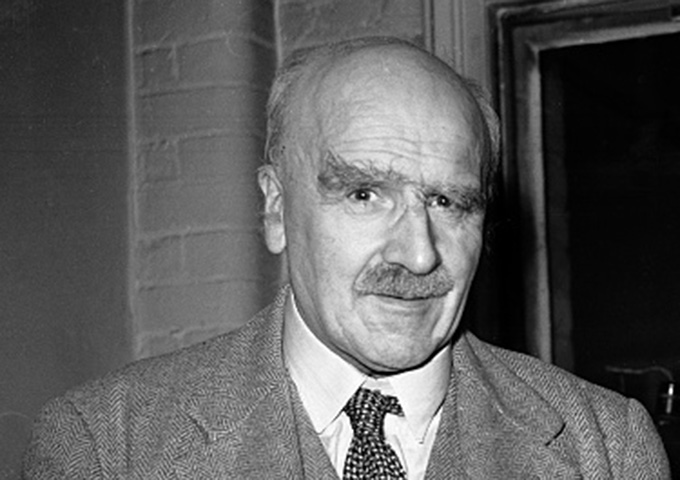This post was originally published on this site
Science fiction writers have imagined just about every aspect of life in some far-off future — including how humans will reproduce. And usually, their visions have included a backlash against those who tamper with Mother Nature.
In his 1923 stab at speculative fiction, for instance, British biologist JBS Haldane said that while those who push the envelope in the physical sciences are generally likened to Prometheus, who incurred the wrath of the gods, those who mess around with biology risk stirring something far more pointed: the wrath of their fellow man. “If every physical or chemical invention is a blasphemy,” he wrote in Daedalus, or Science and the Future, “every biological invention is a perversion.”
Some of Haldane’s projections were remarkably specific. He wrote, for instance, that the world’s first “ectogenic babies” would be born in 1951. These lab-grown babies would come about when two fictitious scientists, “Dupont and Schwarz,” acquire a fresh ovary from a woman who dies in a plane crash. Over the next five years, the ovary produces viable eggs, which the team extracts and fertilizes on a regular basis.
Eventually, Haldane writes, Dupont and Schwarz solve the problem of “the nutrition and support of the embryo.” Soon lab-grown babies become routine, as scientists learn to remove an ovary from any living woman, maintain it in the lab for up to 20 years, extract a new egg every month, grab some sperm (from where, he never says), and successfully fertilize 90 percent of the eggs. Then — and here the details get murky — the embryos are “grown successfully for nine months, and then brought out into the air.”

In Haldane’s imaginary future, 60,000 babies a year are “brought out into the air” in France, the first country to adopt the new technology, by the year 1968. At some later date, he wrote, ectogenic babies go international, and become more common than natural births, with only 30 percent of children “born of woman.”
Haldane was wrong to leave out the human uterus entirely from these reproductive machinations. But he wasn’t wrong about the eventual ability of scientists to remove a living woman’s ovary and keep it in the lab as a source of eggs for a very long time. This was first reported was in 2001, when fertility doctor Kutluk Oktay, then at Weill Medical College of Cornell University, reported freezing strips of ovarian tissue taken from women who needed or wanted to delay childbearing. When the woman is ready for pregnancy, she returns to the lab to have her ovarian tissue thawed and returned to the ovary. If all goes well, the implant will, within a few months, resume secreting hormones normally again, leading the revived ovary to go back to maturing and releasing eggs on a regular cycle. Today, babies born after ovarian tissue cryopreservation number in the hundreds. (And babies born through all forms of assisted reproductive technology number in the millions.)
British writer Aldous Huxley, too, was preoccupied with laboratory-made babies as the gateway to the future — in his case, to a totalitarian dystopia. (Haldane devoted relatively little time to the social implications of ectogenesis.) Artificial reproduction was at the heart of his 1932 novel Brave New World. Carefully selected eggs and sperm were mixed in glass dishes and grown in an artificial uterus, where they could either be cultured with nutrients to breed an intelligent and healthy upper crust, or spiked with poisons to create an underclass of not-quite-human servants.
Huxley himself was curious about how accurate his prophesies were. So, in 1958, he took another look in Brave New World Revisited. It was still two decades before the birth of the world’s first “test tube baby” in his native England, which might explain why Huxley, by that time living in California, seemed to think he had missed the mark in his original projection of endless rows of fake wombs in the baby-making lab. “Babies in bottles and the centralized control of reproduction are perhaps not impossible,” he conceded, but they certainly were not around the corner. He added that “it is quite clear that for a long time to come we shall remain a viviparous species breeding at random.”

Yes, even 60-plus years after Huxley wrote those words, humans do indeed still breed mostly viviparously — meaning in live birth from a mother’s body — and mostly “at random.” Yet assisted reproductive technology has become almost mainstream, in a way that neither Huxley nor Haldane quite could have predicted. Nor did they really signal the emergence, within this same startling century, of a technique like CRISPR, with the potential to change an embryo’s genetic code as easily as making changes in a Word document.
In this regard, writers from a much more recent era, such as those who wrote the screenplay for the 1997 movie Gattaca, were in a better position to get the science basically right, envisioning a grim future in which, as film critic Roger Ebert wrote in his review, genetic engineering of embryos becomes as humdrum as a kind of “preemptive plastic surgery.”
Even as long ago as 1923, though, Haldane was able to offer one unusually provocative prediction: “We can already alter animal species to an enormous extent, and it seems only a question of time before we shall be able to apply the same principles to our own.”

